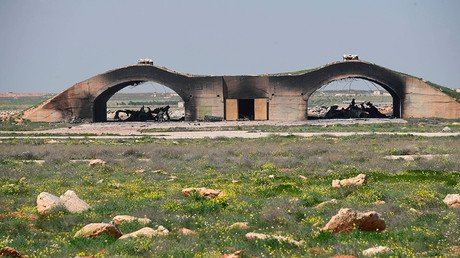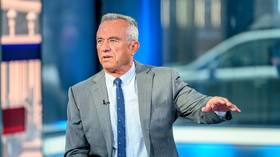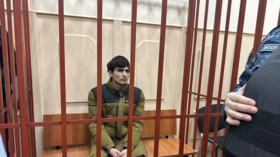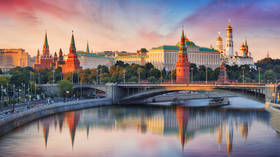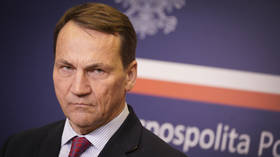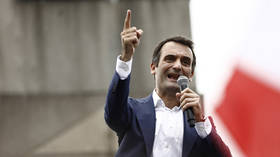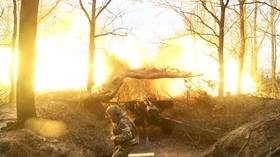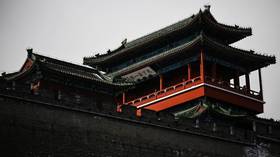US accuses Moscow of ‘sowing doubt’ over narrative of Assad’s culpability in chemical attack
While Moscow continues to call for a thorough and independent probe into the Syrian chemical attack, the White House has “declassified” an open-sourced report that pins the blame on Damascus while accusing Moscow of “sowing doubt” over the US narrative.
“We have gone back through and looked at all the evidence we can and it’s very clear who planned this attack, who authorized this attack and who conducted this attack itself,” Defense Secretary James Mattis said Tuesday adding that he has “no doubt” that Assad was responsible.
On April 4, toxic gas, believed to be sarin, killed dozens of civilians in Khan Shaykhun in the Idlib province of Syria. At the time of the attack, the town was under the control of Tahrir al-Sham, formerly known as the al-Qaeda-affiliated al-Nusra Front.
Witness accounts on social media in the immediate aftermath pinned the blame on an airstrike by Syrian government forces. Reports from the scene also captured civilians foaming at the mouth, with witnesses saying a white smoke spread across the town. The chemical attack was immediately used by the US as a pretext to launch its first unilateral retaliatory strike on a Syrian air base.
Both Moscow and Damascus called for a thorough and independent probe to establish the full picture of the tragedy. Russia believes that Syrian planes bombed a terrorist munitions depot which contained, among other arms, toxic agents that remained under jihadist control following the UN-supervised destruction of Damascus’ sarin stockpiles in 2013.
The US, however, continues to insist that it could only be the Syrian air force that used the chemical weapon under the orders of President Bashar Assad, dismissing any alternative scenarios. Mattis refused to share the evidence the Pentagon used to reach its verdict, while the White House noted that it had plenty of social media and open-source material to back its hardcore conclusions.
“The information we have downgraded and declassified includes a wide body of open-source material, both social media accounts. It includes open-source videos, reporting, open-source imagery, et cetera, as well as our own geospatial intelligence, our signals intelligence, and it includes physiological samples of victims of the attack,” a senior White House official said during the briefing Tuesday.
READ MORE: Airbase hit by US missiles ‘heavily involved’ in anti-ISIS campaign – relative of strike victim
An official “background” document about the attack released by the White House accused Moscow of disseminating “conflicting accounts in order to create confusion and sow doubt within the international community.” Roughly half of the 4-page paper was devoted to “refuting the false narratives” vaguely attributed to “Moscow” or “Russian state media.”
Here's the "official" #WhiteHouse "background document" on what happened in #KhanSheikhoun and served as casus belli. #Syria via @W7VOApic.twitter.com/l32Tfdd2Eg
— Zlatko Percinic (@ZlatkoPercinic) 11 апреля 2017 г.
Based on “pro-opposition social media reporting” the White House is “confident” that an SU-22 that took off from a Damascus-controlled airfield dropped “at least one munition” containing chemical weapons. After further investigation of “open source” imagery Washington firmly dismissed the scenario of a conventional munition hitting jihadists’ chemical stockpile as “inconsistent.”
The White House also noted that the symptoms suffered by the victims of the chemical attack were consistent with sarin exposure. According to the US “assessment” neither Islamic State (IS, formerly ISIS/ISIL) or other terrorists in the area has access to sarin.
Russian MoD releases Drone footage of #Syria missile strike aftermath https://t.co/DRDj7mYnsapic.twitter.com/gNkoYfcRvF
— RT (@RT_com) April 7, 2017
While Mattis rejected unsubstantiated claims that Russia knew of the Syrian chemical attack in advance, the White House accused Moscow of trying to cover the attack and “sow doubt” over the US narrative.
“I think it’s clear that the Russians are trying to cover up what happened there...To cover up Syrian regime culpability in a chemical weapons attack,” the White House official noted.
Russia however never denied or attempted to hide the incident, but on the contrary and from the very outset, tried to get an international team of UN experts to visit the site of the alleged chemical strike to get an expert conclusion. Moscow also insisted, prior to US retaliatory strikes on Friday, that specialists visit the Shayrat Airfield – the base bombed by the US.
The US-presented evidence and logic were dismissed by Colonel-General Sergey Rudskoy, who questioned the “authenticity” of information concerning the attack circulating in the media. He said that the course of events reconstructed through the means of social media evidence raised “serious doubts” not only among the Russian military but also “among many respected experts and organizations.”
The Syrian Army has no chemical weapons and has “no need” to use any such arms, as it has already been conducting a successful offensive on militant positions, the Russian General Staff official has said. Rudskoy also noted that after the 2013 OPWC mission which supervised the surrender of Damascus’ chemical stockpiles; terrorists are the only actors which have access to Syria’s remaining chemical agents.
“Out of 12 facilities used for storing and producing chemical weapons, ten were destroyed as confirmed by the OPCW experts. The Syrian government has no access to the remaining two facilities as they are located on a territory controlled by the so-called opposition,” Rudskoy said at a briefing, adding that it remains unclear if the chemical weapons stored at these two facilities had been destroyed.
Idlib ‘chemical attack’ was provocation to set Assad up, more may come - Putin
— RT (@RT_com) April 11, 2017
DETAILS: https://t.co/A1Sj0j1byQpic.twitter.com/InD1HGImTD
Earlier on Tuesday, Russian President Vladimir Putin called the attack on Khan Shaykhun a “false flag” operation aimed at discrediting the Assad government and warned of similar incidents in the future.
“These actions are aimed at creating a new pretext for accusing the government of Syria of more chemical weapons attacks and provoking more strikes by the US,” added Rudskoy. He said militants were transporting toxic agents into several parts of Syria, including Eastern Ghouta, the site of the 2013 chemical weapons incident.
